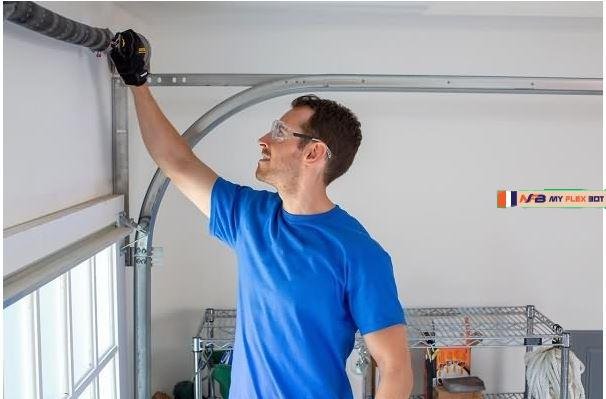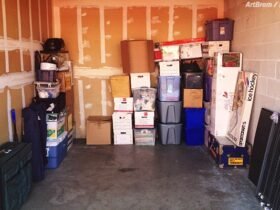As a homeowner, you know the constant juggling of repairs, maintenance, and improvement projects. With so many areas requiring regular care and upkeep, it’s easy for certain tasks to fall by the wayside amid life’s many priorities. But neglecting some key checkpoints around your property can potentially lead to costly problems down the road – or even safety hazards for you and your family.
That’s why reviewing a home safety checklist annually is crucial. Many homeowners tend to focus just on the obvious renovations and fixes. However, plenty of easy-to-overlook areas and components require inspection, too. From the depths of your crawlspaces to the depths of your home’s exterior elements, identifying issues today can prevent major headaches tomorrow.
So grab a notepad, a flashlight, and your walking shoes – it’s time to dive into this vital home safety checklist no homeowner should ignore.
Exterior Examinations
Think of your home’s exterior as its first line of defense – a fortified barrier shielding your interior from the harsh elements, persistent pests, and even potential intruders. Yet this gatekeeper is so often disregarded and left vulnerable until something drastically breaks down. During your safety check, carefully inspect areas like:
- Roof: Examine roof tiles, shingles, or sections for cracks, leaks, lifted areas, or deterioration. Check that flashing around vents, skylights, and chimneys is firmly sealed. Catching roof issues early prevents costly interior leaks and damage.
- Foundation: Walk the perimeter, looking for cracks or crumbling in the foundation walls and gaps between the foundation and walls. If not addressed, poor foundation drainage or soil settling can quickly lead to water infiltration or structural issues.
- Siding/Exterior: Replace any cracked, loose, or rotting sections of siding, stucco, trim, or fascia. Gaps create easy entry points for pests and moisture, which you’ll want to eliminate. Don’t overlook areas around exterior utilities or vents, either.
And let’s not gloss over those all-important exterior utilities and access points. Maintaining the functional elements like your garage door is equally crucial for safety and smooth operation. For example, regularly inspecting the garage door spring is vital for safe operation and long-term performance. A worn or broken spring from a reputable manufacturer can compromise the door’s mechanics, creating potential hazards and strain on the opener system.
Landscape Once-Over
For your exterior inspection, walk around your property’s landscaping and hardscaping elements. Overgrown bushes or trees can create homes for pests and rodents who may try to escape indoors. Cracked sidewalks, loose railings, or deteriorating retaining walls present trip hazards that should be repaired.
The best way to avoid these issues is to keep your property well-maintained and debris-free. If you have a large yard, consider hiring a professional landscaper to help with the maintenance.
Also, check that all outdoor lights and electrical outlets are working properly and that there is no exposed wiring. Be sure lawn equipment like mowers and edgers is stored safely with fuels and oils contained. A thorough look at your lawn, garden, and recreation areas prevents unexpected issues.
Inside Inspection Areas
Head indoors next to check out areas that can be deceptively hazardous if neglected:
- Attics and crawlspaces: Use a bright LED flashlight to inspect every nook and cranny of these often-neglected spaces. Termites, rodents, and water damage can easily go unseen. Also, check insulation, wiring, and ventilation and look for any entry points allowing outdoor elements inside.
- Basements/lower levels: The dreaded dampness can create a playground for mold and mildew if you’re not vigilant. Check for moisture entering via basement windows and inspect areas around plumbing, electrical panels, and HVAC components for potential safety concerns.
- Windows & doors: Examine for deteriorating seals to stop drafts and leaks. Check entries for proper installation and working locks. You’d be amazed how easily decay can occur around these openings over time!
- Household appliances and systems: Don’t forget often-neglected appliances and household systems like water heaters, dryers, and fireplaces. Fraying wires, vent obstructions, and expired components create fire and health hazards faster than you think.
In addition to those key areas, your annual safety inspection should include testing every smoke detector, carbon monoxide detector, and GFCI outlet to ensure full operation. Having up-to-date fire extinguishers ready is crucial, too.
Similarly, if you have a fireplace, make sure to clean it regularly and have it inspected by a professional at least once per year.
Read Also:- Safety
Conclusion
While this checklist may seem daunting at first glance, breaking it down room by room turns it into a very manageable task you can tackle over a couple of weekends. Keep a running document noting any issues that need professional repairs or replacements. Prioritize the true safety hazards and create a timeline for expert help where required.
At the end of the day, staying on top of home maintenance isn’t just about protecting your single biggest investment – it’s about safeguarding your entire household. Often, overlooking innocent-seeming issues is the catalyst for compounding problems that inevitably cost you more headaches and cash down the road.
So embrace your inner Mr. Or Mrs. Homeowner Inspector and commit to giving your property a thorough, annual Top-to-Bottom safety examination. Having that checklist officially completed provides priceless peace of mind that your loved ones can live hazard-free under your roof!











Leave a Reply